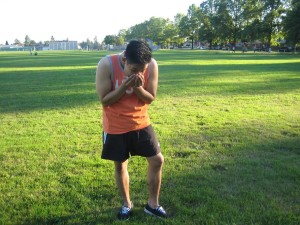Tuberculosis is caused by the bacterium Mycobacterium tuberculosis. Take note that the disease is airborne and triggered by bacteria that is capable of thriving in any part of the body, but usually found in the lungs. An individual who is infected with tuberculosis is only communicable if the bacteria are present in the throat or lungs. Always bear in mind that the condition can be fatal if not treated with medications. If you want to learn more about this condition and minimizing the spread, you can enroll in a first aid course today.
Spread of tuberculosis
It is a known fact that the disease spreads when an infected individual sneezes, coughs, speaks or sings. The bacteria from the lungs or throat into the air are released where others easily inhale them. An individual can become infected by inhaling the tuberculosis bacterium.
Who are at risk?
Not all who are infected with tuberculosis becomes sick. Those who have a weakened immune system including those who have AIDS, infants and elderly could not fight the bacterium and prevent them from spreading to others.
As a communicable disease, proper hygienic measures should be observed at all times to prevent the spread of the condition. One way is to observe proper hand washing at all times.

Difference between latent and active tuberculosis
Tuberculosis that does not trigger sickness is called as latent tuberculosis. An individual with latent tuberculosis is not capable of spreading the disease to others. Once the individual becomes sick, he/she have active tuberculosis. Take note that latent tuberculosis can progress into the active form anytime especially when the immune system of the individual is preoccupied in fighting other illnesses such as flu or cold.
Treatment for tuberculosis
When treating tuberculosis, it typically includes oral medications that spans for 6-12 months. For latent tuberculosis, the doctor will prescribe isoniazid. As for active tuberculosis, the doctor will prescribe a combination of medications which includes rifampicin, isoniazid, pyrazinamide and ethambutol. In most cases, the doctor will prescribe different medications for nursing women, pregnant women, young children and those who have AIDS. In case drug resistance has developed in which medications could not eliminate the bacterium, the doctor will prescribe additional medications that are effective in dealing with the bacteria.
Prevalence of tuberculosis
It is important to note that the condition is considered one of the most infectious diseases. Anyone can easily acquire the disease but many do not develop active tuberculosis. Always bear in mind that the disease is present in all corners of the globe but more common in African and Southeast Asian countries.
Vaccination for tuberculosis
There is a vaccine for tuberculosis which is called BCG vaccine. Take note that the vaccine is not always effective and can pose certain health risks. The BCG vaccine is only recommended by healthcare professionals who work in areas where there is high risk for tuberculosis.
